
Berlin is the capital and largest city of Germany, both by area and by population. Its more than 3.85 million inhabitants make it the European Union's most populous city, as measured by population within city limits. Simultaneously, the city is one of the States of Germany. Berlin is surrounded by the state of Brandenburg, and Brandenburg's capital Potsdam is nearby. Berlin's urban area has a population of around 4.5 million and is therefore the most populous urban area in Germany. The Berlin-Brandenburg capital region has around 6.2 million inhabitants and is Germany's second-largest metropolitan region after the Rhine-Ruhr region, and the sixth-biggest metropolitan region by GDP in the European Union.
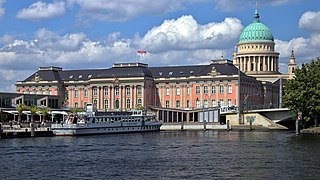
Potsdam is the capital and largest city of the German state of Brandenburg. It is part of the Berlin/Brandenburg Metropolitan Region. Potsdam sits on the River Havel, a tributary of the Elbe, downstream of Berlin, and lies embedded in a hilly morainic landscape dotted with many lakes, around 20 of which are located within Potsdam's city limits. It lies some 25 kilometres southwest of Berlin's city centre. The name of the city and of many of its boroughs are of Slavic origin.
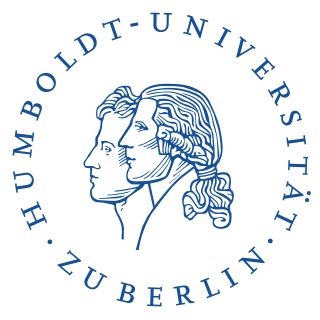
The Humboldt University of Berlin is a public research university in the central borough of Mitte in Berlin, Germany.

Mitte is the first and most central borough of Berlin. The borough consists of six sub-entities: Mitte proper, Gesundbrunnen, Hansaviertel, Moabit, Tiergarten and Wedding.

Charlottenburg is a locality of Berlin within the borough of Charlottenburg-Wilmersdorf. Established as a town in 1705 and named after Sophia Charlotte of Hanover, Queen consort of Prussia, it is best known for Charlottenburg Palace, the largest surviving royal palace in Berlin, and the adjacent museums.

The Berlin Palace, formally the Royal Palace, adjacent to the Berlin Cathedral and Museum Island in the Mitte area of Berlin, was the main residence of the House of Hohenzollern from 1443 to 1918. Expanded by order of King Frederick I of Prussia according to plans by Andreas Schlüter from 1689 to 1713, it was thereafter considered a major work of Prussian Baroque architecture. The royal palace was one of Berlin’s largest buildings and shaped the cityscape with its 60-meter-high (200 ft) dome.

The Berlin Observatory is a German astronomical institution with a series of observatories and related organizations in and around the city of Berlin in Germany, starting from the 18th century. It has its origins in 1700 when Gottfried Leibniz initiated the "Brandenburg Society of Science″ which would later (1744) become the Prussian Academy of Sciences. The Society had no observatory but nevertheless an astronomer, Gottfried Kirch, who observed from a private observatory in Berlin. A first small observatory was furnished in 1711, financing itself by calendrical computations.
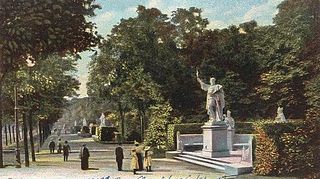
The Siegesallee was a broad boulevard in Berlin, Germany. In 1895, Kaiser Wilhelm II ordered and financed the expansion of an existing avenue, to be adorned with a variety of marble statues. Work was completed in 1901.
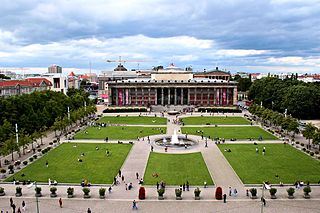
The Lustgarten is a park in Museum Island in central Berlin at the foreground of the Altes Museum. It is next to the Berliner Dom and near the site of the former Berliner Stadtschloss of which it was originally a part. At various times in its history, the park has been used as a parade ground, a place for mass rallies and a public park.
Ottmar Ette is Professor of Romance languages and Comparative literature at University of Potsdam.

The Prussian National Monument for the Liberation Wars is a war memorial in Berlin, Germany, dedicated in 1821. Built by the Prussian king during the sectionalism before the Unification of Germany it is the principal German monument to the Prussian soldiers and other citizens who died in or else dedicated their health and wealth for the Liberation Wars (Befreiungskriege) fought at the end of the Wars of the Sixth and in that of the Seventh Coalition against France in the course of the Napoleonic Wars. Frederick William III of Prussia initiated its construction and commissioned the Prussian Karl Friedrich Schinkel who made it an important piece of art in cast iron, his last piece of Romantic Neo-Gothic architecture and an expression of the post-Napoleonic poverty and material sobriety in the liberated countries.

Reinhold Carl Thusmann Felderhoff was a German sculptor and medallist.
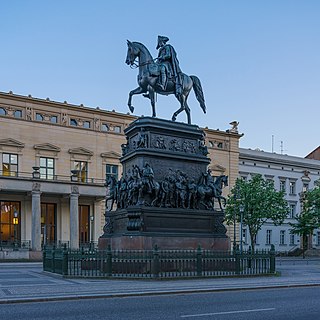
The equestrian statue of Frederick the Great on Unter den Linden avenue in Berlin's Mitte district commemorates King Frederick II of Prussia. Created from 1839 to 1851 by Christian Daniel Rauch, it is a masterpiece of the Berlin school of sculpture, marking the transition from neoclassicism to realism. The bronze statue shows "The Old Fritz" dressed in military uniform, ermine coat and tricorne hat on horseback above the leading generals, statesmen, artists and scientist of his time. Walled in during World War II, it was disassembled by East Germany in 1950, reassembled in Sanssouci Park in 1963, and returned to its original location in 1980.

The Goethe Monument is an outdoor 1880 memorial to German writer and statesman Johann Wolfgang von Goethe by Fritz Schaper, located in Tiergarten in Berlin, Germany. The sculpture's base depicts the allegorical figures of Drama, Lyric Poetry, and Science.
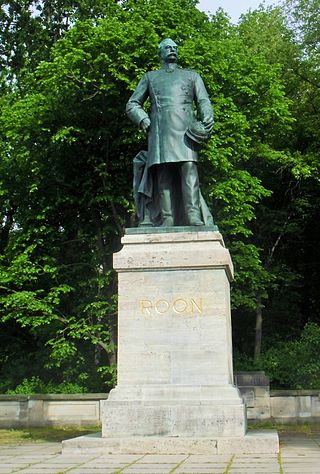
The statue of Albrecht von Roon is an outdoor 1904 monument to Albrecht von Roon by Harro Magnusson, installed in Tiergarten in Berlin, Germany.

The statue of Helmuth von Moltke the Elder by Joseph Uphues is located near the Berlin Victory Column in the Tiergarten, Berlin.
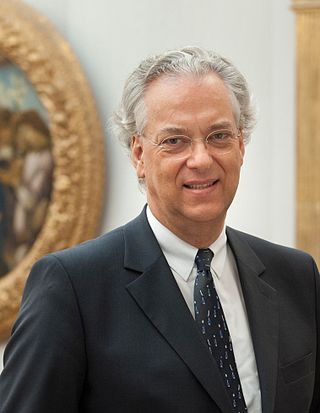
Michael Eissenhauer is a German art historian and was director-general of the Staatliche Museen zu Berlin.

The Schloss Tegel or Humboldt-Schloss is a country house in Tegel, part of the Reinickendorf district of the German capital Berlin. The brothers Wilhelm and Alexander von Humboldt spent much of their childhood in a former schloss on the site and on the estate, which extends almost as far as Lake Tegel.
Liliane Weissberg is an American literary scholar and cultural historian specializing in German-Jewish studies and German and American literature. She is currently the Christopher H. Browne Distinguished Professor in Arts and Sciences and Professor of German and Comparative Literature at the University of Pennsylvania. She received, among others, a Guggenheim Fellowship, the Humboldt Research Award for her research on German-Jewish literature and culture and the Berlin Prize of the American Academy in Berlin, and holds an honorary degree from the University of Graz.


















